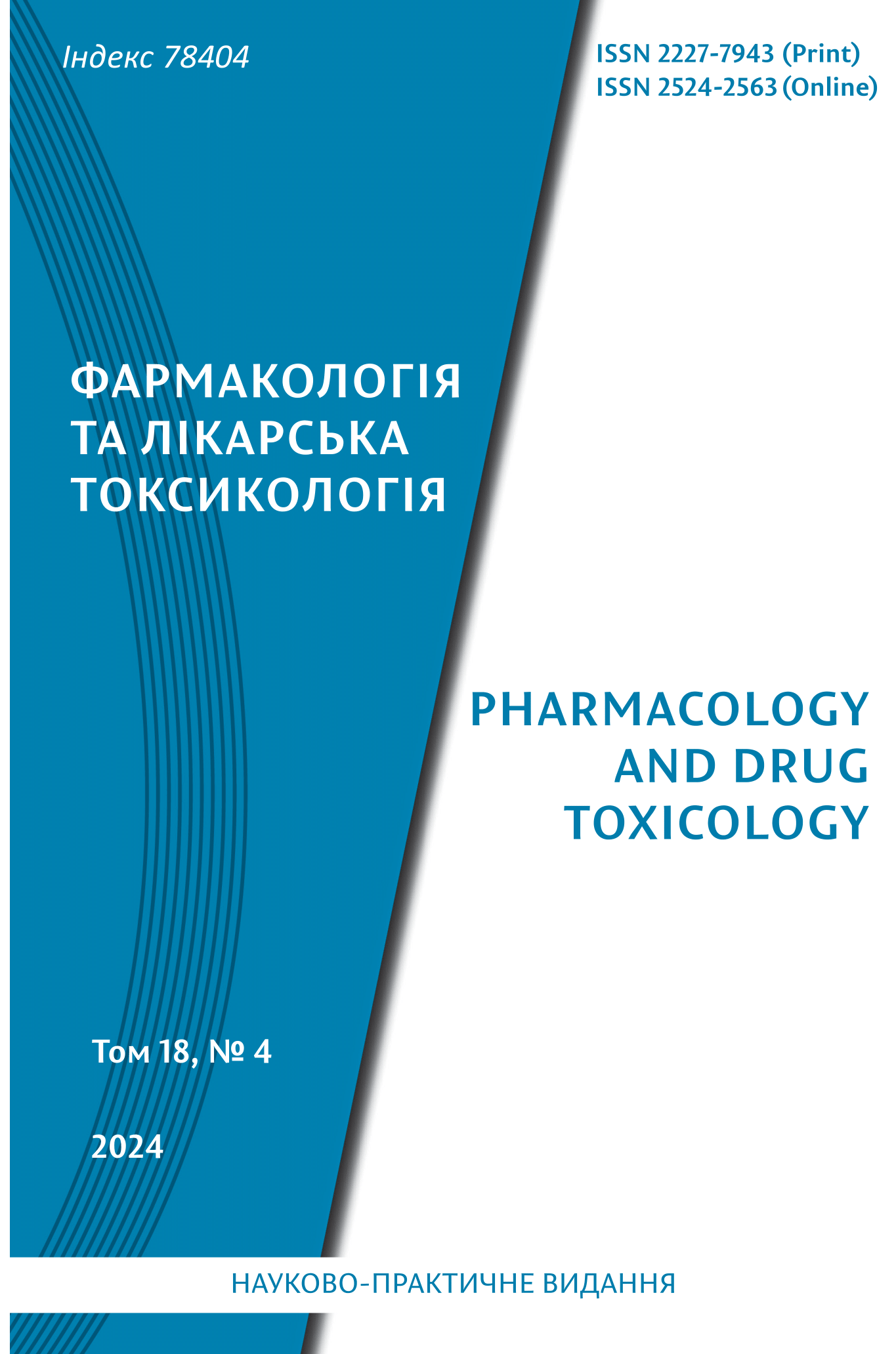Abstract
The aim of the study – to investigate the effects of edaravone on the levels of neurological and cognitive
deficits, as well as on behavioural reactions in rats with acute intracerebral haemorrhage (ICH) and experimentally reproduced equivalent of type 2 diabetes mellitus (T2DM). T2DM was modelled by intraperitoneal injection of nicotinamide (230 mg/kg) and streptozotocin (65 mg/kg), ICH – by microinjection of 1 μL of bacterial collagenase 0.2 IU/mL (type IV-S) into the striatum of anaesthetized rats on the day 60th of the experiment. The rats were randomized into four groups: intact control (saline, 5 ml/kg/day, n = 8); pathology control 1 (T2DM + saline, 5 ml/kg, n = 9); pathology control 2 (T2DM + ICH + saline, 5 ml/kg, n = 7); experimental group (T2DM + ICH + edaravone, 6 mg/kg/day, n = 6). The first administration of edaravone was performed 30 min after the microinjection of collagenase.
The studied drug was administered intraperitoneally for 10 days. The pharmacological efficacy of edaravone was assessed in the passive avoidance conditioning test (PACT) and the open field test. The degree of neurological deficit was determined by the mNSS scale. Statistical significance (p < 0.05) was determined using the Mann-Whitney U-test and Fisher's F-test.
It has been experimentally established, that the reproduction of type 2 diabetes does not lead to significant disturbance of conditioned reflex activity and does not cause the development of neurological deficit. Simultaneously, experimental ICH under the conditions of T2DM was manifested by signs of neurological deficit (p < 0.05) with the greatest severity from the first to the fourth day of observation. In addition, 71.4% of animals in this group were without an acquired reflex in the PACT test (p < 0.05). At the same time, there was a decrease in the duration of the latency period (LP) by 52.5% (p < 0.05) compared to the intact control, as well as a statistically significant suppression of locomotor and exploratory activity in the open field test.
It should be noted that edaravone significantly reduced the manifestations of neurological deficit from the first (85.7%, p < 0.05) to the fourth (100%, p < 0.05) days of acute ICH. In addition, the course administration of edaravone was associated with a 2.1-fold increase in the LP index (p < 0.05) and a 2.5-fold increase in the number of animals with acquired conditioned skills (p < 0.05). The coefficient of anti-amnesic activity of the drug was 104.7%. In addition, the indicators of locomotor and exploratory activity after edaravone administration showed a statistically significant increase – 3.76 times for vertical lifts and 1.98 times for crossed squares, compared to the pathological control 2.
In conclusion, an early 10-day course of intraperitoneal administration of edaravone prevents the development of neurological deficits, memory and behavioural disorders in rats caused by acute ICH and T2DM.
